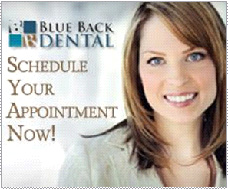
You probably think you know how to take care of your teeth: brush twice a day and floss regularly, right? That’s certainly a good start, but there’s actually a lot more to keeping your teeth healthy. Follow these guidelines for better dental health.
- Brush for a full two minutes.
- When you’re rushing to get ready for work or tired after a long day, it’s all too easy to short-change your brushing routine. Don’t do it! Brushing removes plaque, bacteria, and food particles that can lead to tooth decay, so it’s important to brush thoroughly to make sure you give your teeth a complete cleaning. The American Dental Association recommends brushing for a full two minutes to guard against cavities and gum disease.Choose the right toothpaste.
- Most toothpastes have fluoride, but check the label to make sure the one you use has enough—it should have 1350-1500 parts per million (ppmF) for the maximum benefits. Toothpaste for children under 3 years old should have at least 1000 ppmF.Choose the right toothbrush.
- As some dentists say, the best toothbrush is the one you will use. Having said that, some toothbrushes are better than others, in that they do a better job of cleaning or make brushing easier. An electric or sonic toothbrush can make brushing simple, and the automatic two-minute switch-off included on many models helps you brush for the full recommended time. If you prefer a manual toothbrush, choose one with soft bristles, which helps prevent damage to gums and enamel.Don’t rinse your mouth after brushing.
- You were probably taught to rinse your mouth out with water after brushing, but if you do that, you’re actually washing away all the decay-preventing fluoride you’ve just brushed onto your teeth. After brushing, spit out the toothpaste but don’t rinse your mouth out—this gives the fluoride more time to work.Don’t brush too soon after eating acidic foods.
- It may seem like a good idea to brush immediately after you eat, and usually it is. However, after consuming a highly acidic food or drink like oranges, lemons, grapefruit, limes, wine, or fruit juice, it’s better to wait at least 30 minutes before you brush because the acid weakens tooth enamel, and brushing right away can make it easier to damage or remove tooth enamel.Replace your toothbrush regularly.
- Old, worn-out bristles are much less effective at ridding your teeth of plaque, so make sure you toss your old toothbrush once it’s looking worn. The American Dental Association recommends replacing your toothbrush (or electric brush head) every two to three months.Don’t forget your tongue!
- The same bacteria that leads to tooth decay can get in the crevices of your tongue and cause bad breath. Rinsing with water or mouthwash isn’t enough to dislodge bacteria on your tongue, so after you’re done brushing your teeth, give your tongue a few brushes with the bristles of your toothbrush. You can also use the built-in tongue scrubber some toothbrushes have on the non-bristle side of the toothbrush.Floss every single day.
Flossing can be a chore, but it’s a necessary one—a toothbrush simply can’t get between teeth, so you need to use floss to remove stubborn food particles and decay-causing bacteria from hard-to-access places. The American Dental Association recommends flossing at least once a day.
